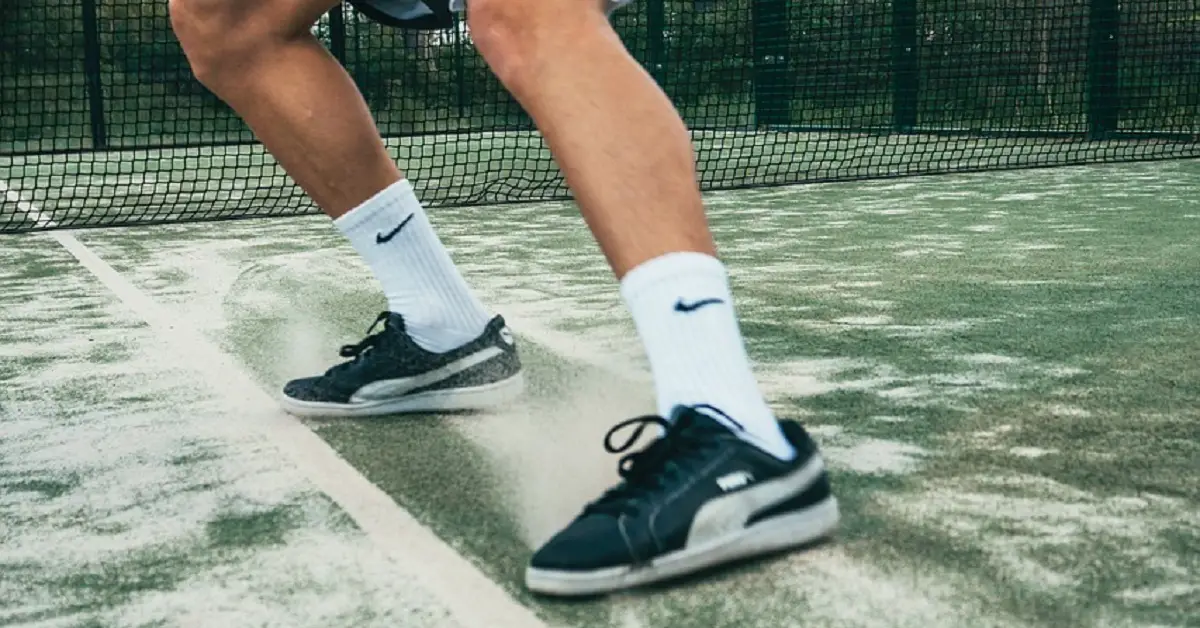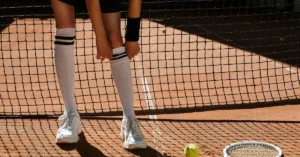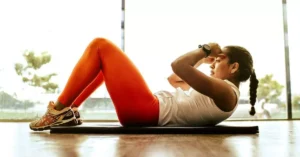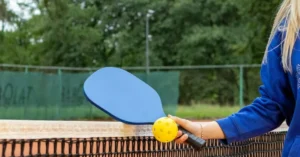Improving your footwork in tennis is one of the most important things you can do to become a better tennis player. Good footwork allows you to cover more court, strike the ball earlier, and add power to your shots. This can help build your confidence on the court and shape your personality as a player. With the right coach, improving your foot speed can lead to great success.
Having good footwork in tennis will help you move more efficiently, using less energy to get to the ball. This will allow you to sprint around the court for a longer period of time. Your hands, arms, body, and legs should work in harmony. Good footwork in tennis is only effective if it works in harmony with your arm movement and balance. Proper footwork is crucial for maximizing your movements on the court and executing shots with precision and power.
In this article, we will delve into the importance of footwork in tennis and how to improve your footwork skills. We will discuss various footwork drills that you can do to improve your agility, speed, and balance on the court. Whether you are a beginner or an advanced player, improving your footwork in tennis is essential for taking your game to the next level. So let’s get started!
Pro:
✅ best all-rounder ✅ stability ✅ high support
Con:
❌ not the widest
The Importance of Footwork in Tennis
Footwork is an essential part of tennis, and it affects your power, control, speed, and reaction time. In this section, we will explore the role of footwork in tennis, how footwork affects power and control, and the influence of footwork in tennis on speed and reaction time.
The Role of Footwork in Successful Tennis
Footwork in tennis is crucial because it allows you to move quickly and efficiently around the court. Good footwork enables you to reach any ball, regardless of where it is hit on the court. It also helps you to hit the ball with the right technique, which is essential for accuracy and power.
Without good footwork in tennis, you will struggle to keep up with your opponent, and you will find it difficult to hit the ball with accuracy and power. Therefore, if you want to be successful in tennis, you need to work on your footwork.
How Footwork in Tennis Affects Power and Control
Footwork in tennis is closely linked to power and control. When you have good footwork, you can generate more power in your shots because you can transfer your weight from one foot to the other more efficiently. This allows you to hit the ball harder and with more accuracy.
Good footwork in tennis also gives you better control over your shots. When you move your feet properly, you can position yourself in the right place to hit the ball with the correct technique. This enables you to hit the ball with more spin, which gives you greater control over the trajectory of the ball.
Influence of Footwork on Speed and Reaction Time
Footwork is critical for speed and reaction time. When you have good footwork in tennis, you can move quickly around the court, which enables you to get to the ball faster. This gives you more time to prepare for your shot, which improves your accuracy and power.
Good footwork in tennis also improves your reaction time. When you move your feet quickly and efficiently, you can anticipate your opponent’s shots better, which enables you to react faster. This gives you an advantage over your opponent because you can get to the ball faster and hit it with more power and accuracy.
Understanding Different Footwork Techniques
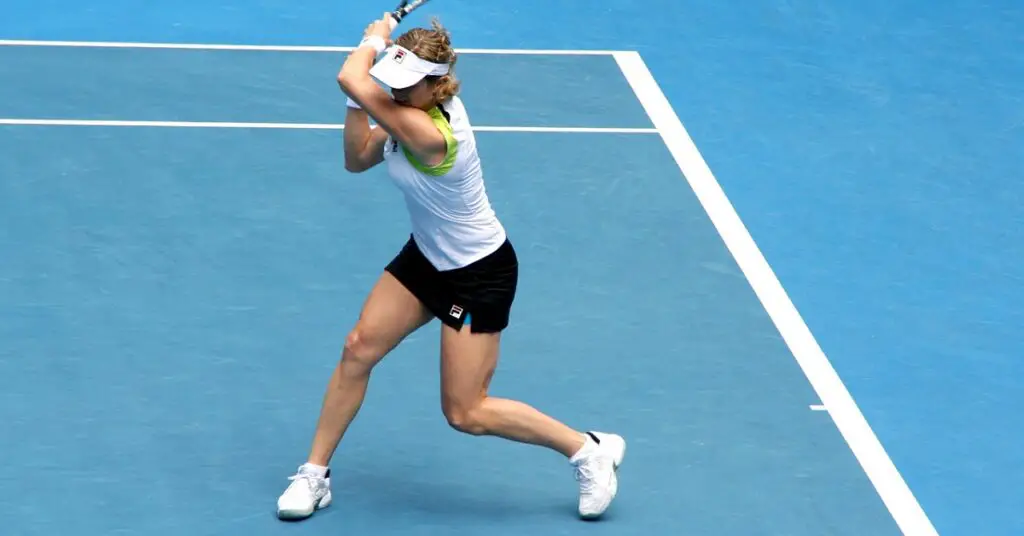
To become a successful tennis player, it is important to have a good understanding of different footwork techniques. Here are some of the most common footwork techniques used in tennis:
The Split Step
The split step is a fundamental technique used in tennis. It is a quick hop that is done just before your opponent makes contact with the ball. This technique helps you to be on your toes and ready to move in any direction. The split step is done by jumping and landing with your feet shoulder-width apart. This technique helps you to maintain balance and be ready for the next move.
The First Step
The first step is crucial in tennis. It is the step that you take after the split step and it sets you up for the rest of the point. The first step should be taken in the direction of the ball. It should be a quick and explosive step that helps you to get to the ball quickly. The first step is important because it sets the tone for the rest of the point.
The Crossover Step
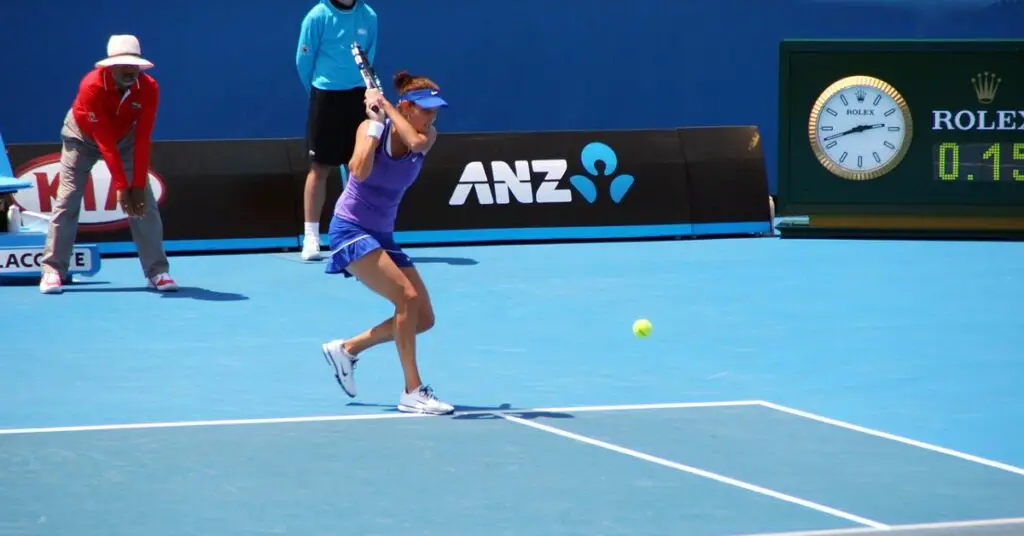
The crossover step is a technique used to move quickly to the side of the court. It is done by crossing your back foot in front of your front foot and then stepping in the direction you want to go. This technique is used when you need to cover a lot of ground quickly. The crossover step is a quick and explosive movement that helps you to get to the ball quickly.
Shuffle Step
The shuffle step is a technique used to move laterally along the court. It is done by shuffling your feet quickly in the direction you want to go. This technique is used when you need to cover a short distance quickly. The shuffle step is a quick and efficient movement that helps you to get to the ball quickly.
Adjustment Steps
Adjustment steps are used to make small adjustments to your position on the court. They are small, quick steps that help you to get into the right position to hit the ball. Adjustment steps are used when you need to make small changes to your position on the court. They are quick and efficient movements that help you to get into the right position to hit the ball.
How to Improve Your Footwork in Tennis
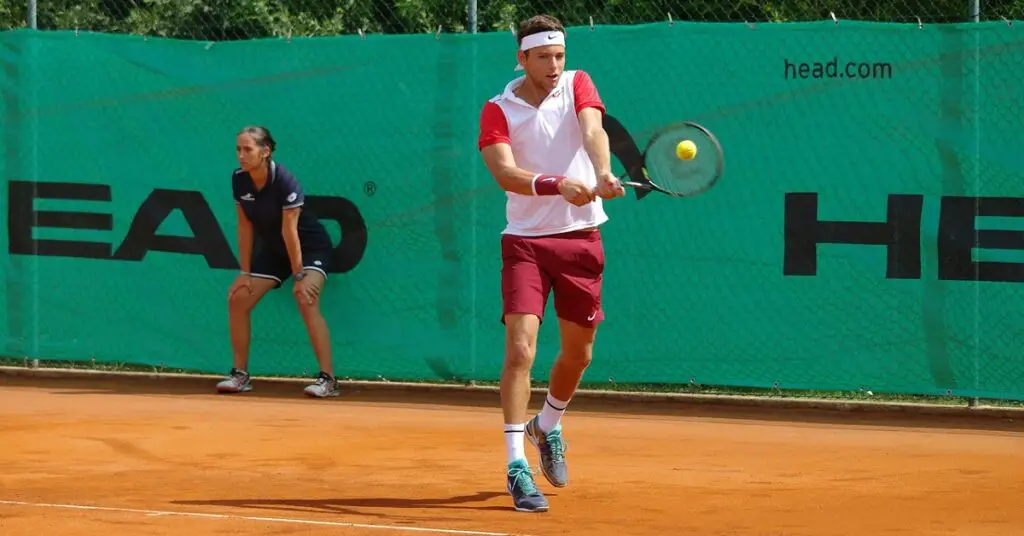
Improving your footwork in tennis can help you move more quickly and efficiently around the court, giving you a competitive edge over your opponent. Here are some ways to improve your tennis footwork:
Footwork Drills and Exercises
There are many footwork drills and exercises that you can do to improve your tennis footwork. Some of the most effective ones include:
- Mini tennis Z-ball: This is a straightforward tennis footwork game for two or more tennis players that can help you improve speed and endurance on the court. It’s not as specific to tennis as some of the other footwork drills down the list, but it is excellent for building the basics.
- Ladder drills: These drills involve moving your feet quickly in and out of a ladder, which can help improve your foot speed and coordination.
- Cone drills: These drills involve setting up cones in a specific pattern and moving around them in various ways to improve your agility and footwork.
The Role of a Coach
Working with a coach can be an excellent way to improve your footwork in tennis. A coach can provide you with personalized feedback on your footwork and help you develop a training plan that is tailored to your needs. They can also teach you proper technique and form, which can help you move more efficiently on the court.
Practicing Court Movement
Practicing court movement is another essential aspect of improving your tennis footwork. One way to do this is by practicing footwork drills on the court. This can help you get used to moving around the court and help you develop muscle memory for specific movements.
Improving Muscle Memory and Coordination
Improving your muscle memory and coordination can also help improve your footwork in tennis. One way to do this is by practicing footwork drills regularly. This can help your body get used to specific movements, making them more natural and automatic over time.
Common Footwork Mistakes and How to Avoid Them
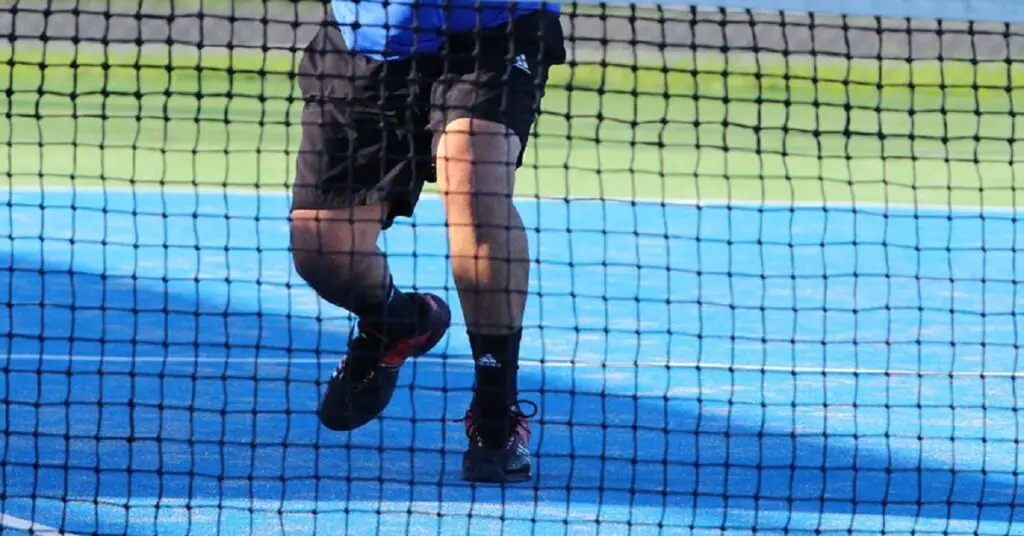
Good footwork in tennis is crucial. It allows you to move quickly around the court and be in the right position to hit the ball. However, there are some common footwork mistakes that many players make, which can lead to unforced errors and spacing issues. In this section, we will discuss two common footwork mistakes and how to avoid them.
Unforced Errors and Spacing
One of the most common footwork mistakes in tennis is not maintaining proper spacing between you and the ball. This can lead to unforced errors, as you may not be able to hit the ball cleanly or with the right amount of power. To avoid this mistake, make sure you are always moving towards the ball and keeping the right distance between you and the ball.
Another common mistake is not having proper footwork when hitting the ball. Many players tend to hit the ball with their feet too close together, which can lead to poor balance and a lack of power. To avoid this mistake, make sure you have a good base when hitting the ball. Keep your feet shoulder-width apart and bend your knees slightly to maintain balance.
Improper Change of Direction
Another common footwork mistake in tennis is not having a proper change of direction. This can lead to poor court coverage and difficulty in returning shots. To avoid this mistake, make sure you are always on your toes and ready to change direction quickly.
When changing direction, make sure you use the right footwork. For example, if you need to move to your right, use a cross-step to get into position quickly. This will allow you to maintain your balance and be in the right position to hit the ball.
The Impact of Different Court Surfaces on Footwork
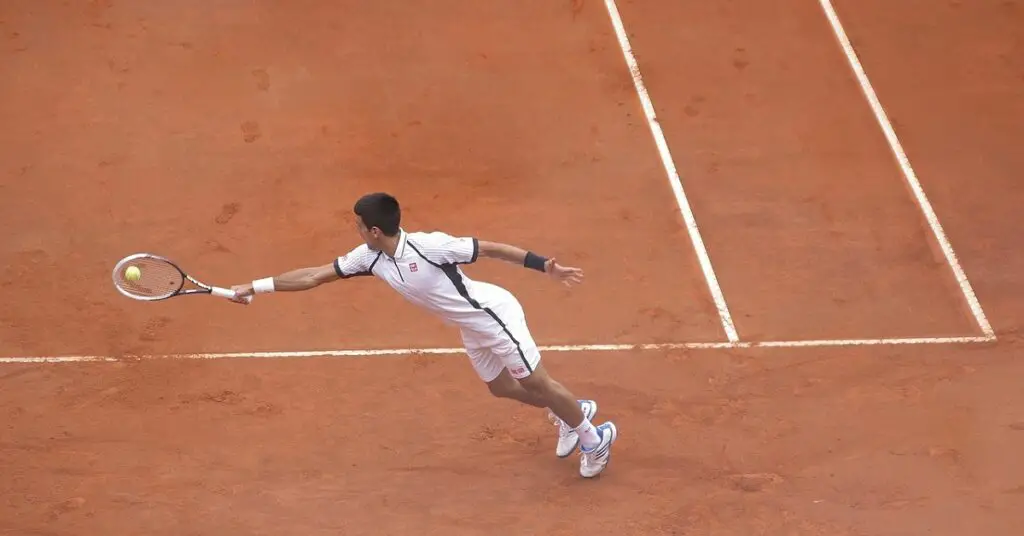
When it comes to tennis, the court surface can have a significant impact on your footwork. Different surfaces require different techniques and adjustments to your footwork to be successful. In this section, we will explore the impact of different court surfaces on your footwork.
Footwork on a Hard Court
A hard court is the most common surface in tennis. It is made of concrete or asphalt and is typically faster than other surfaces. On a hard court, footwork is crucial to success. You need to be able to move quickly and change direction smoothly to reach the ball. Here are some tips for improving your footwork on a hard court:
- Keep your weight on the balls of your feet to be ready to move in any direction.
- Take small, quick steps to get to the ball faster.
- Use a split step before your opponent hits the ball to be ready to move in any direction.
- Use your non-dominant foot to push off when changing direction to maintain balance and control.
Footwork on Other Surfaces
Other surfaces in tennis include clay, grass, and carpet. Each of these surfaces requires different footwork techniques due to their unique characteristics. Here is a brief overview of footwork on these surfaces:
- Clay: A clay court is slower than a hard court, so you need to take longer strides and slide to reach the ball. Use your non-dominant foot to slide and keep your weight forward to maintain balance.
- Grass: A grass court is faster than a hard court, so you need to take shorter strides and stay low to the ground. Keep your weight on the balls of your feet to be ready to move quickly in any direction.
- Carpet: A carpet court is a fast surface, similar to a hard court. You need to take small, quick steps and stay on the balls of your feet to be ready to move quickly.
Factors Influencing Footwork in Tennis
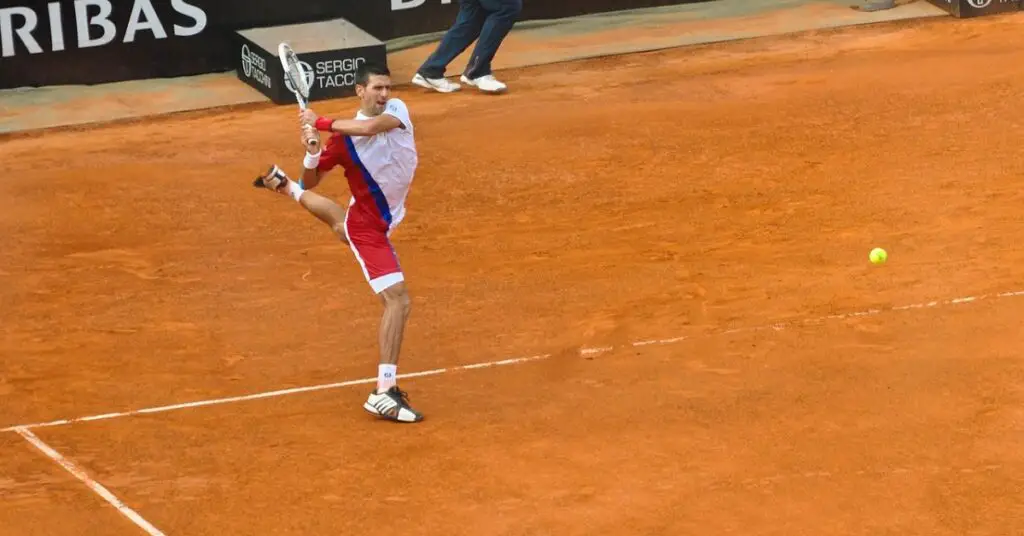
Good footwork is crucial for success in tennis. It allows you to cover more court, strike the ball earlier, and add power to your shots. To improve your footwork, it is essential to understand the factors that influence it. Here are some of the most important factors:
The Role of Tennis Shoes
The right tennis shoes can make a big difference in your footwork. Tennis shoes are designed for playing tennis and should not be replaced by running shoes, for example. They should provide support, stability, and traction on the court. They are specifically designed for the fast-paced movements required in tennis, such as quick stops, starts, and changes of direction.
When choosing tennis shoes, look for a pair that fits well and provides good support for your feet. Make sure that the shoes have a non-slip sole that provides good traction on the court. It is also important to replace your tennis shoes regularly, as worn-out shoes can affect your footwork and increase your risk of injury.
The Importance of Endurance
Endurance is another important factor that influences your footwork in tennis. Tennis matches can be long and grueling, and good endurance is essential to maintain your footwork throughout the match.
To improve your endurance, include cardiovascular exercises in your training routine, such as running, cycling, or swimming. These exercises will help improve your stamina and help you maintain your footwork throughout the match.
The Impact of Anticipation and Reaction Time
Anticipation and reaction time are also important factors that influence your footwork in tennis. Anticipation is the ability to predict where the ball will go, while reaction time is the ability to quickly respond to the ball once it is hit.
To improve your anticipation and reaction time, practice drills that focus on these skills. For example, you can practice hitting the ball against a wall and trying to anticipate where it will bounce. You can also practice drills that involve quick changes of direction, such as sprinting to the net and then backpedaling to the baseline.
FAQ
How can I improve my footwork in tennis?
Improving your footwork in tennis requires practice, discipline, and patience. Here are some tips to help you improve your footwork:
Focus on your footwork during practice: One of the best ways to improve your footwork is to focus on it during practice. This means paying close attention to your footwork as you move around the court and making a conscious effort to move your feet quickly and efficiently.
Use ladder drills: Ladder drills are a great way to improve your footwork and agility. Set up a ladder on the court and practice moving your feet quickly through the rungs. This will help you develop the quickness and agility needed to move around the court more efficiently.
Work on your balance: Good footwork requires good balance. Practice standing on one foot and then switch to the other foot. This will help you develop the balance needed to move around the court quickly and efficiently.
How can I practice tennis footwork at home?
Practicing tennis footwork at home is a great way to improve your skills and stay in shape. Here are some exercises you can do:
Jump rope: Jumping rope is a great way to improve your footwork and coordination. It also helps build endurance and cardiovascular fitness.
Shadow tennis: Shadow tennis is when you practice your footwork without hitting a ball. Stand in front of a mirror and practice moving your feet quickly and efficiently. This will help you develop the quickness and agility needed to move around the court more efficiently.
Use a resistance band: Tie a resistance band around your ankles and practice moving side to side. This will help you develop the lateral quickness needed to move around the court more efficiently.
How can I improve my child’s footwork in tennis?
Improving your child’s footwork in tennis requires patience, guidance, and encouragement. Here are some tips to help your child improve their footwork:
Make it fun: Tennis is a fun and exciting sport, and making footwork drills fun can help keep your child engaged and motivated. Use games and challenges to make footwork drills more enjoyable.
Practice regularly: Consistent practice is key to improving footwork. Encourage your child to practice regularly and make it a part of their routine.
Work on the basics: Good footwork starts with the basics. Make sure your child is using the correct footwork techniques and reinforce good habits.
What are your favorite footwork drills or exercises to improve your movement on the court? Are there any tips or techniques that you’ve found particularly helpful in developing your footwork in tennis? Share your thoughts and experiences on the topic in the comments section below.

